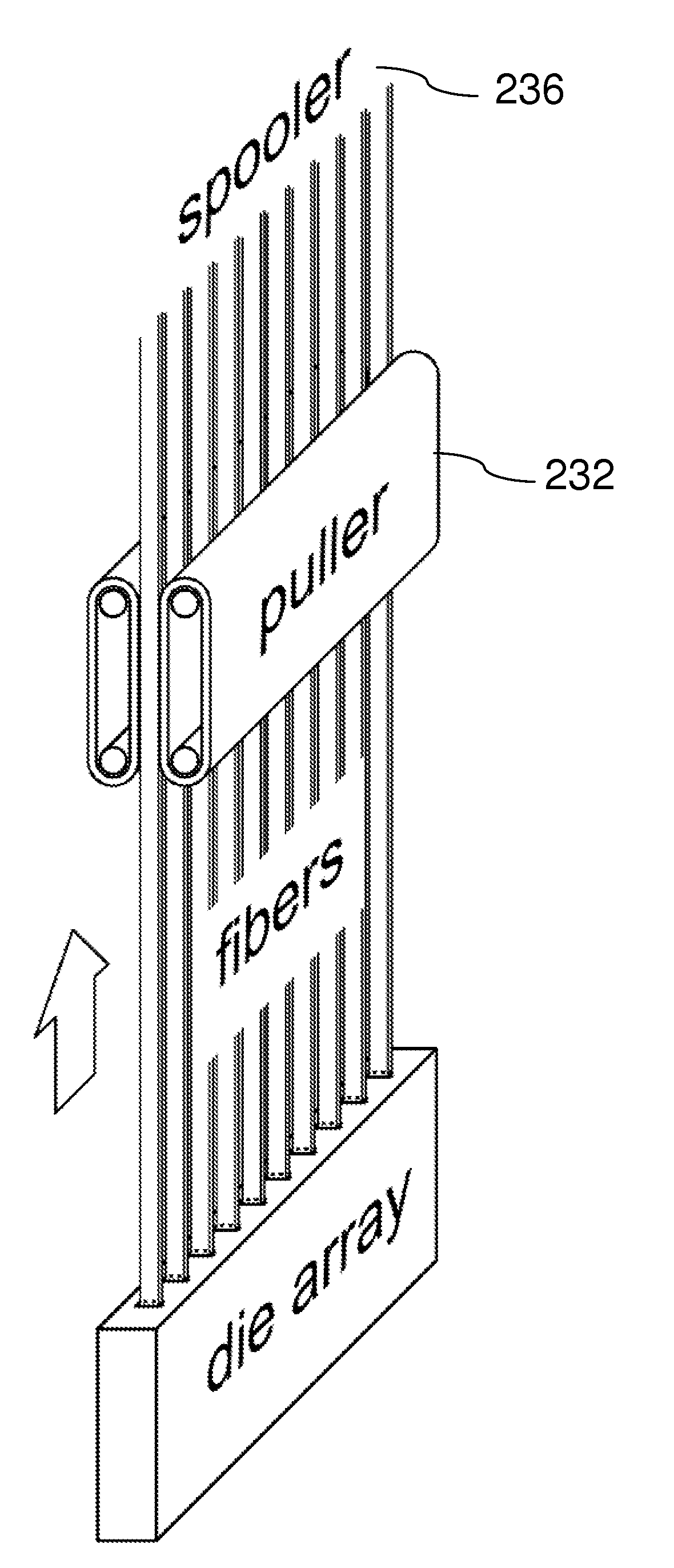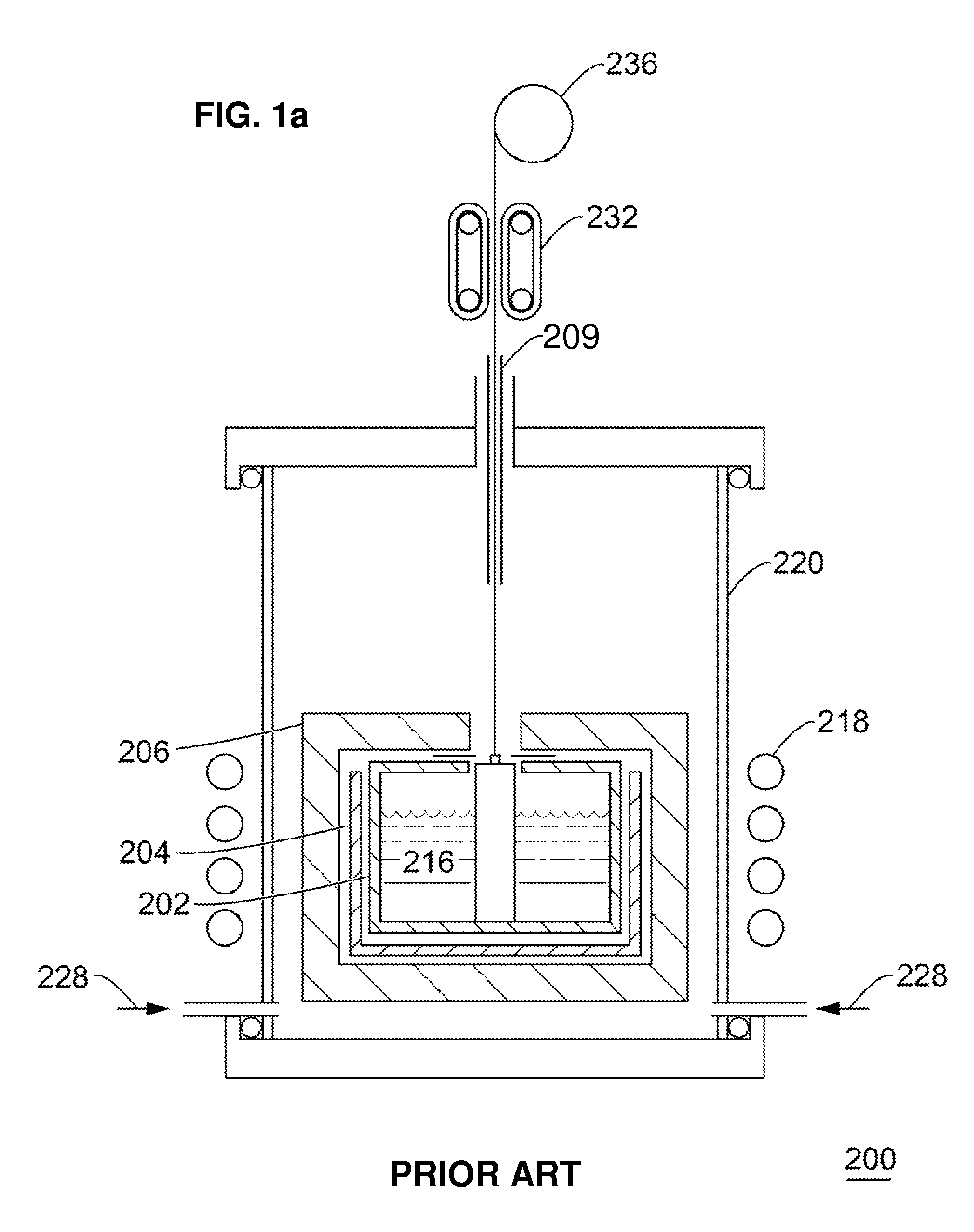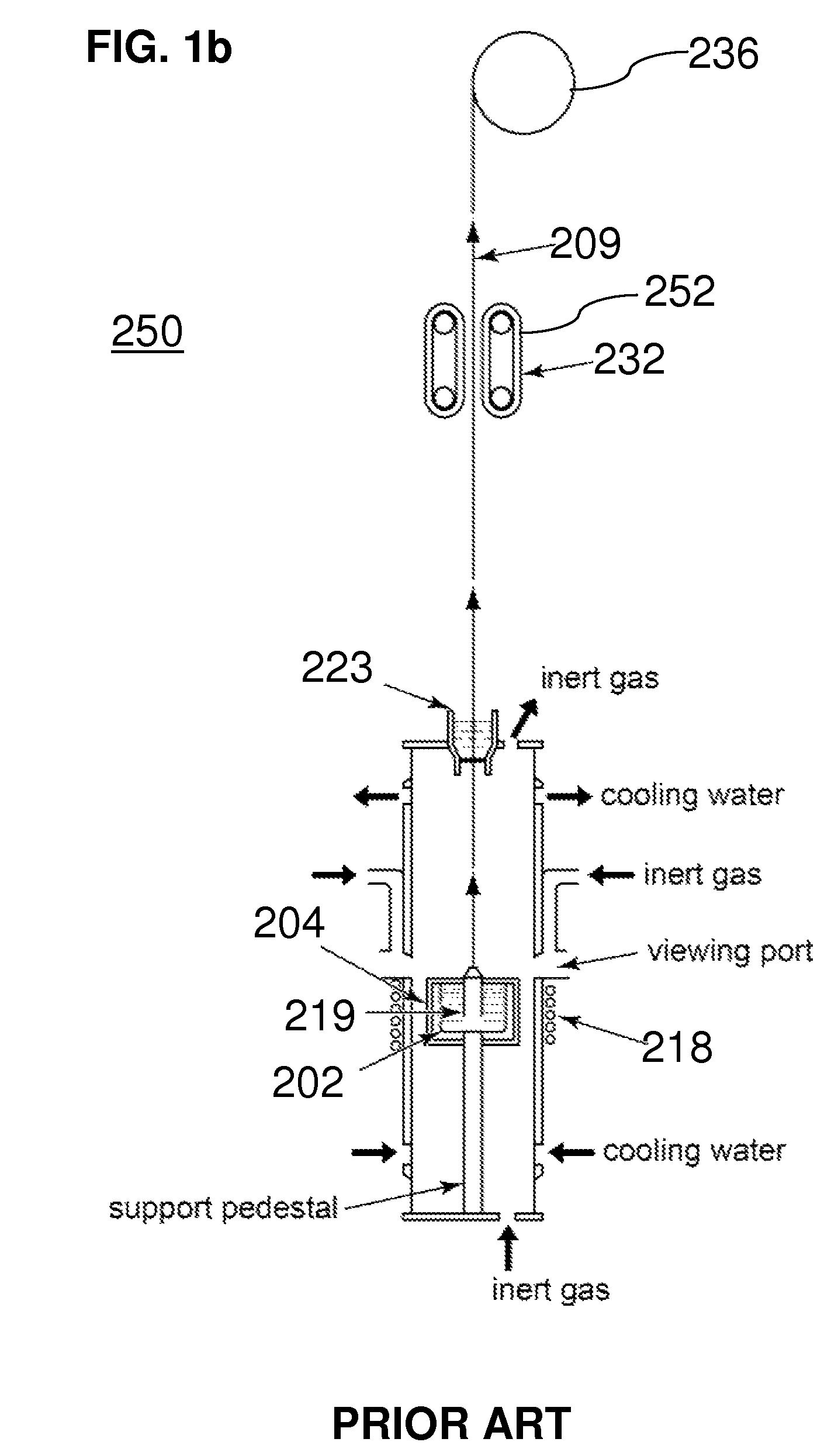Faceted ceramic fibers, tapes or ribbons and epitaxial devices therefrom
a technology of ceramic fibers and tapes, applied in the direction of superconducting magnets/coils, magnetic bodies, natural mineral layered products, etc., can solve the problems of inability to manufacture substrates using known processes in long lengths or in large areas, substrates are also rigid and not flexible, and ac losses are generally high, so as to reduce ac losses and reduce ac losses
- Summary
- Abstract
- Description
- Claims
- Application Information
AI Technical Summary
Benefits of technology
Problems solved by technology
Method used
Image
Examples
example 1
[0112]Using system 200 as shown FIG. 1, a structural sapphire fiber with R-plane facets according to the present invention was prepared. An initial sapphire seed of approximately ⅛″× 1 / 16″×1″ with a pointed end was attached to the die tip by melting the pointed end to the die tip. As noted above, it is known that the R planes of a sapphire crystal form a three-sided pyramid, with an 86° angle between the sides of the pyramid. The seed was cut so its axis lies along a corner of the pyramid. Thus, it has two R planes parallel to its axis. The R planes are at an angle of 86° to each other. One plane is coincident with the broad face of the seed. The seed was attached to a long, flat shaft, which can travel through the belt puller 232 shown in FIG. 1a. The puller was then placed as close to the tips as possible, and the initial fiber was drawn through the puller. The fiber resulting from this second operation is typically of good crystal orientation but can be of poor straightness. The ...
example 2
[0115]Again using system 200 described in FIG. 1a, a fiber of smaller dimensions was prepared. A fiber of cross-section 205 μm (thick)×460 μm (wide) was grown with two R-plane facets using a race-track shaped (composed of opposing semicircular end sections or curved edges and opposing straight parallel lines or flat faces) seed. The fiber was grown at a speed of 500 mm / hr, to a length of 848 mm. The sides of the racetrack-shaped fiber were flat. Table 2 gives the tilt of the R planes in the fiber. The “large face” is the broad, flat side of the fiber. The large face of the fiber is coincident to within 4.28° of an R plane. FIG. 24 shows a 2D detector image of the reciprocal lattice in relation to the fiber axis which is vertical was taken which revealed the R-planes being tilted by about 4° and 6° from the axis. FIG. 25 shows in schematic form the relationship of the R planes relative to the physical fiber in schematic form. An end view, a side view, and a front side view of the fib...
example 3
[0117]Using system shown in FIG. 1a, a sapphire fiber of was grown using a racetrack shaped seed containing two R-plane facets. The fiber grew stably to a length of approximately ten meters. Cross-section fracture mages of the fiber revealed that the fiber maintained its race-track shaped cross-section.
[0118]The above demonstrates that race-track shaped seeds can be used to create R-plane facets on a sapphire fiber. Racetrack-shaped fibers were found to grow robustly and stably, and have the potential to be extended to very long lengths without degradation of crystal structure. The crystal was oriented to give two pairs of R planes parallel to the growth axis. These R-plane facets can also result in miscut R-plane facets on the substrates, miscut by about 5 degrees. It is expected that the miscut of the facets will not have a detrimental effect on film growth especially with respect to superconductivity application and may in-fact be beneficial from a flux-pinning perspective (see e...
PUM
| Property | Measurement | Unit |
|---|---|---|
| length | aaaaa | aaaaa |
| speed | aaaaa | aaaaa |
| thick | aaaaa | aaaaa |
Abstract
Description
Claims
Application Information
 Login to View More
Login to View More - R&D
- Intellectual Property
- Life Sciences
- Materials
- Tech Scout
- Unparalleled Data Quality
- Higher Quality Content
- 60% Fewer Hallucinations
Browse by: Latest US Patents, China's latest patents, Technical Efficacy Thesaurus, Application Domain, Technology Topic, Popular Technical Reports.
© 2025 PatSnap. All rights reserved.Legal|Privacy policy|Modern Slavery Act Transparency Statement|Sitemap|About US| Contact US: help@patsnap.com



